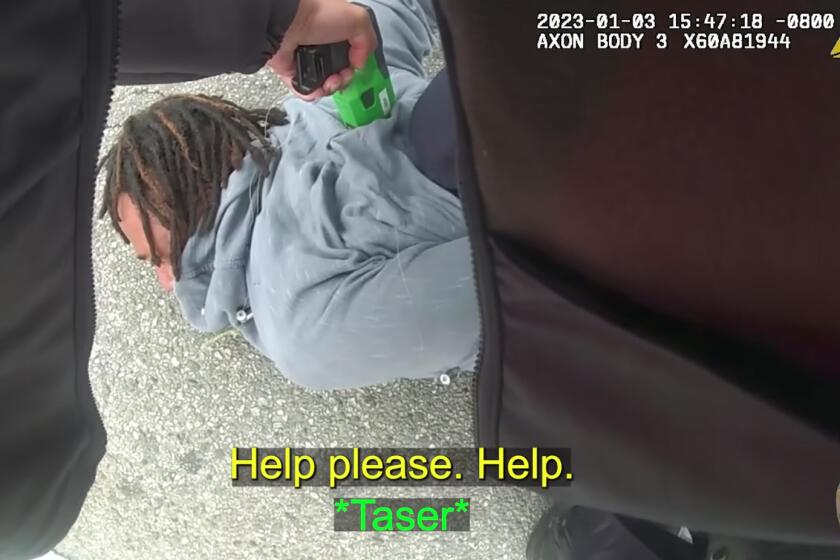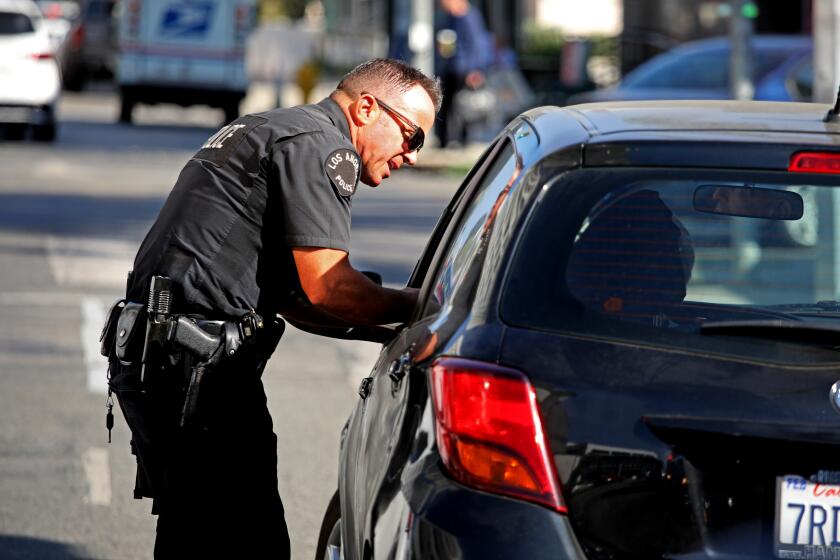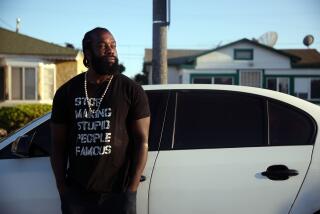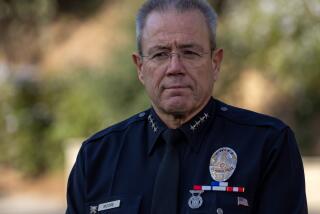Man’s death after tasing reignites debate over LAPD’s role in traffic enforcement
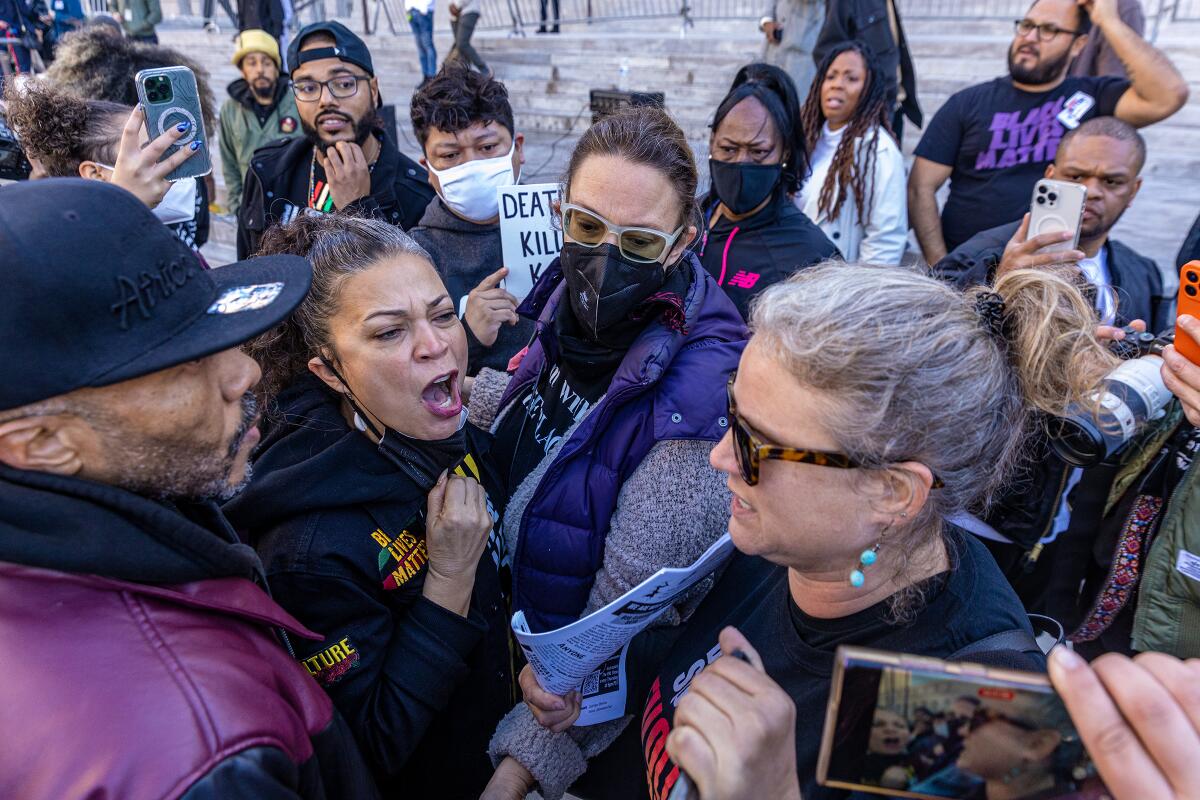
- Share via
Police say that Keenan Anderson caused the minor traffic collision in Venice that ended with several officers piling onto him and shocking him with a Taser.
His family disagrees. They say Anderson, who died a few hours later, was a victim of the crash and that what he needed in that moment of distress was medical care, not police intervention.
Activists and some City Council members say that Anderson’s death lends even greater urgency to efforts to remove armed police officers from traffic enforcement — a tenet of a nationwide movement to radically transform the criminal justice system that took hold after the murder of George Floyd in Minneapolis nearly three years ago.
“There is no reason why law enforcement should be the first responders at traffic stops or accidents,” said Patrisse Cullors, a co-founder of the Black Lives Matter Global Network and distant cousin of Anderson, 31, a teacher and father. “Keenan, you deserved care. Keenan, you deserved compassion. Keenan, you deserved to be in your classroom with your students. Keenan, you deserved to be on your honeymoon.”
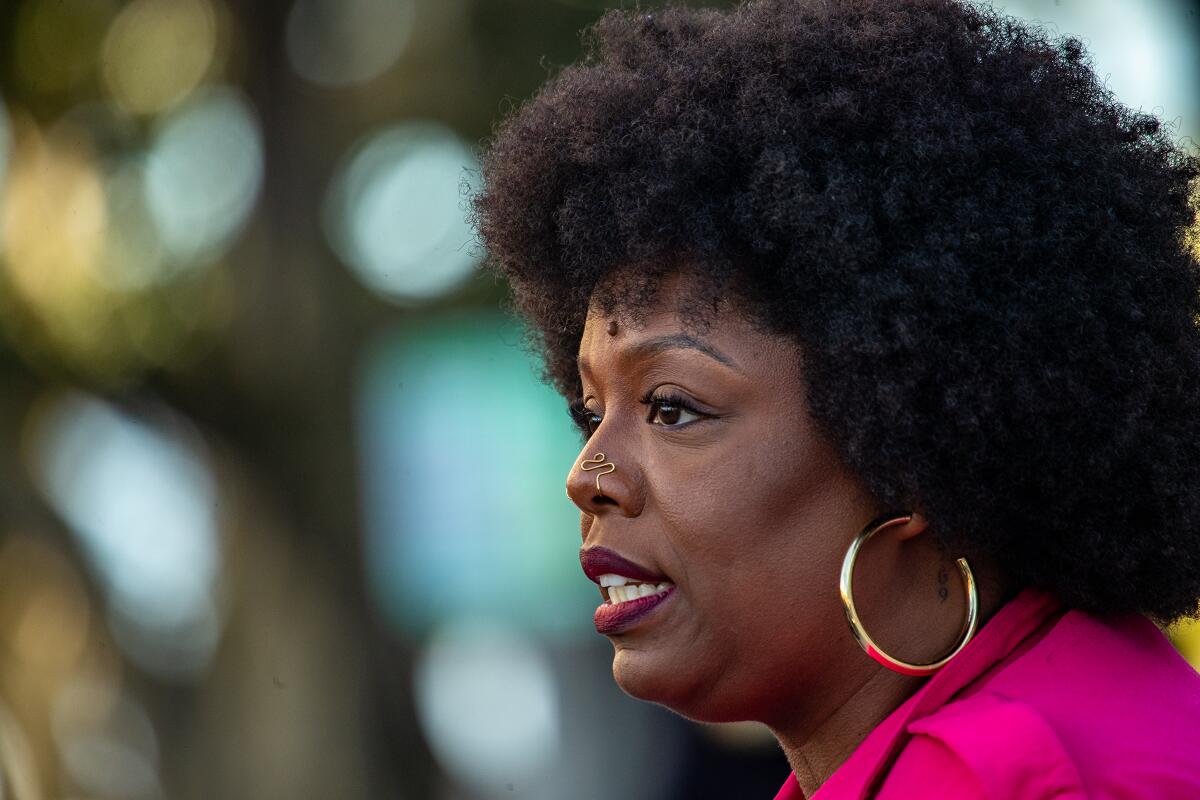
On Tuesday, Cullors and other speakers gathered on the steps of City Hall to ask for limits on Taser use and the release of unedited body-camera footage from three recent fatal police encounters, including Anderson’s death.
Chief among their demands was for the LAPD to stop responding to minor traffic collisions, as well as to stop pulling over motorists for traffic violations, arguing that communities of color have historically borne the brunt of such enforcement. Instead, they said, such tasks could be handled by unarmed civilians.
They also called on Mayor Karen Bass not to reappoint LAPD Chief Michel Moore to a second five-year term, arguing that blame for the recent deaths ultimately lies at his feet.
Videos released this week of a teacher who died after Los Angeles police discharged a Taser on him at least six times on a Venice street raise serious concerns about the officers’ tactics, law enforcement experts who reviewed the tapes said.
Moore said last week that before his encounter with police, Anderson was wandering through traffic after possibly attempting “to get into another car without” that driver’s permission.
The encounter began sometime before 3:30 p.m. on Jan. 3 with a motorcycle officer arriving at what the LAPD characterized as a “felony hit-and-run” car crash at Venice and Lincoln boulevards. Police said Anderson was in the middle of the street, yelling out, “Please help me.”
In videos released by the LAPD, Anderson becomes distraught and cries out for help as multiple officers hold him down. Eventually, he is handcuffed and hobbled at his ankles before paramedics take him away. He later died at a hospital.

The debate over the role of law enforcement in traffic incidents stretches back decades but intensified in the wake of Floyd’s murder and the ensuing nationwide reckoning in which critics challenged some long-held assumptions around policing.
In late 2019, the LAPD drastically scaled back on pretextual stops — pulling over random vehicles for a minor traffic violation to look for more serious crimes — after a Times investigation found that the department stopped and searched Black and Latino drivers at higher rates than whites.
Moore has said that such stops netted few arrests and undermined public trust.
After further restrictions on pretextual stops were enacted last March, a Times analysis found that officers were stopping far fewer people for minor traffic violations like a broken taillight or tinted window and conducted fewer searches during those stops.
Since LAPD’s new policy took effect, officers are making far fewer pretextual stops but finding illegal contraband more often, a Times analysis found.
Critics say that even when such encounters don’t end in violence, the fines that often result can send people into spiraling debt and lead to the suspension of their driver’s licenses.
LAPD officials have said they would be willing to relinquish certain traffic duties, if picked up by another agency. But enforcement remains a top priority, they say, citing among other reasons the inherent dangers of traffic stops and a recent rise in accidents.
A long-promised study of alternative traffic approaches by the Los Angeles Department of Transportation, which could serve as a foundation for new legislation, remains unfinished.
In a statement, the transportation department said that a task force of residents, activists and experts has met seven times and would release its findings by this spring.
Instead of deploying armed police, some cities have tackled traffic safety by reinvesting in street improvements and educating the public while exploring alternative methods for holding motorists accountable.
The city of Berkeley, for instance, has been developing a new division that aims to send unarmed representatives to certain traffic incidents, instead of police, as the city works toward its goal of reducing racial disparities in traffic stops and ending serious crashes by 2028.
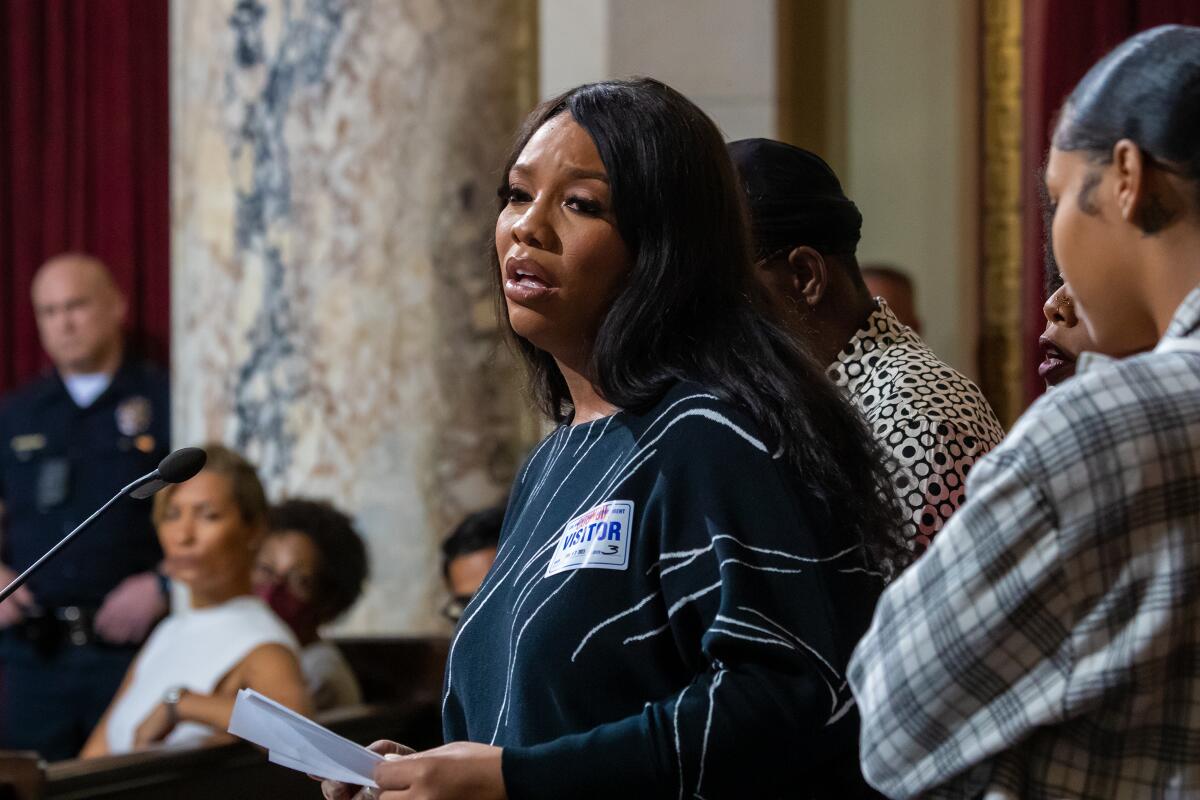
After Tuesday’s news conference, speakers filed into the City Council chambers to register their outrage over Anderson’s death.
“We have demands,” Black Lives Matter-L.A. leader Melina Abdullah told the council, her voice cracking with emotion. “We say remove police from traffic. Remove police from mental health. Remove police from schools. Remove police from every place they clearly don’t belong.”
After several of Anderson’s family members, including Cullors, spoke, Councilmember Curren Price offered condolences to them and others whose loved ones were killed by police.
“I think everyone around this horseshoe certainly expects the police to protect and serve,” Price said. “But we want to make sure they are accountable.”
A motion introduced Tuesday by Councilmember Monica Rodriguez would clear the way for expanding existing civilian response models for mental health and domestic dispute emergencies.
A separate motion by Councilmembers Bob Blumenfield and Marqueece Harris-Dawson would earmark $1 million in city funding for the immediate creation of an Office of Unarmed Response and Safety.
For the record:
10:45 a.m. Jan. 18, 2023An earlier version of this story stated that a separate motion by Councilmember Bob Blumenfield would earmark $1 million in city funding for the immediate creation of an Office of Unarmed Response of Safety. Blumenfield co-sponsored the motion with Councilmember Marqueece Harris-Dawson, and the office’s correct name is the Office of Unarmed Response and Safety.
In Sacramento, state Sen. Steven Bradford (D-Gardena) has introduced legislation that would restrict pretextual stops to instances in which an officer has reasonable suspicion that a search will uncover evidence of a crime.
Bradford said in an interview Tuesday that he spoke with top LAPD officials and found “some agreement that there might be a need for legislation such as this.”
“I think if we can reduce the incidence of unnecessary stops, I think it also leads to a safer interaction not only for the general public but also the officer as well,” he said.
Times staff writers Julia Wick and Richard Winton contributed to this report.
More to Read
Sign up for Essential California
The most important California stories and recommendations in your inbox every morning.
You may occasionally receive promotional content from the Los Angeles Times.
